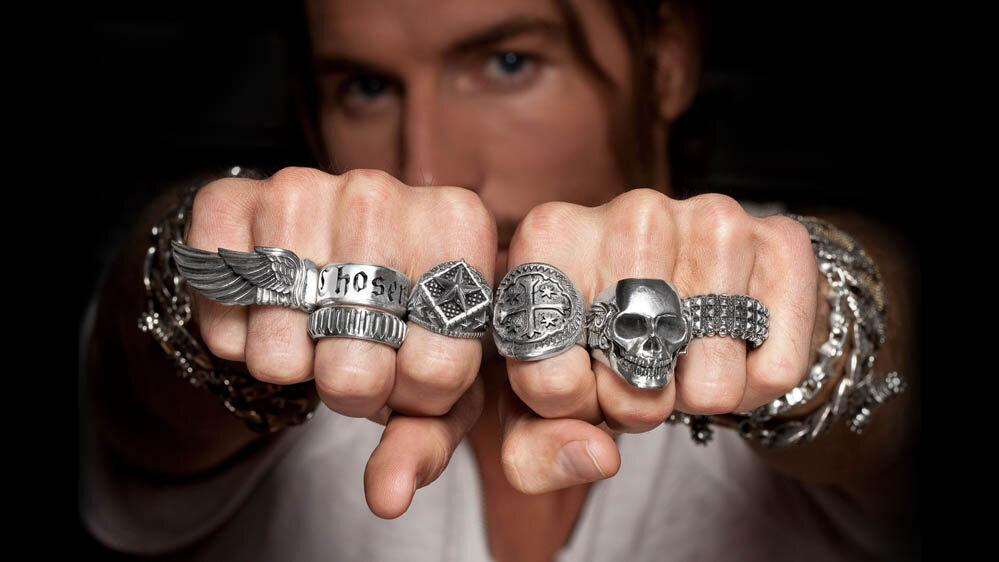Keyrings in Popular Culture: Small but Significant
keyring have made notable appearances in popular culture, often symbolizing relationships, memories, or achievements. In movies and TV shows, exchanging keyrings can signify a meaningful bond between characters, such as a couple or close friends. For instance, in the TV series “Friends,” Joey gives Chandler a keyring, symbolizing their enduring friendship. Collectible keyrings from franchises like Star Wars, Marvel, and Harry Potter have also become popular among fans, serving as both memorabilia and expressions of fandom. These small accessories carry significant emotional weight, often representing larger themes in the narratives they are part of.
When it comes to Vintage mens jewellery styles are bold and substantial, unlike modern jewellery. This article will explore mens jewellery trends from the Victorian, Arts and Crafts, Art Deco and Mid-Century eras.
Be aware that not all pieces of jewelry considered vintage are actually antique. The difference is the age of the piece and whether it has been previously owned.
Victorian
During the Victorian period, the industrial revolution allowed jewellery to be mass produced and made affordable for the middle class. Rings were a popular piece during this time, particularly gold styles that featured precious and semi-precious stones. Early Victorian jewellery often featured motifs drawn from the natural world, such as flowers or snakes and dragons. They also incorporated gems that held specific meaning, such as pink coral to protect against illness, ruby to symbolize passion, and seed pearls to symbolise tears.
Following the death of Prince Albert in 1861, Victorian society went into a long period of mourning. This saw the fashioning of black clothing and mourning jewellery including rings and lockets. Black jewellery was crafted from jet (black fossilized wood) and tortoise shell along with gold, diamonds and onyx.
Arts and Crafts
Arts and crafts are a great way to connect with your children and teach them how to use their creative skills. It also helps improve socialization and develop empathy.
In the 19th century the movement was born out of a desire to revive pre-industrial techniques and raise the status of decorative arts. It was popularized by William Morris and John Ruskin and the esthetics were influenced by nature and medieval art.
The movement also embraced handcraft and used approachable materials, as opposed to the ornate styles of Victorian times. The Arts and Crafts style is often confused with the Art Nouveau, as they both share similar features such as arched frames, floral motifs and artisanal stained glass.
One of the most important aspects of the Arts and Crafts movement was the concept of a home as a sanctuary, a spiritual haven and the centre of the family unit. This led to homes such as Coleton Fishacre, designed by William Morris and built in 1925.
Art Deco
The 1920s ushered in a new world style order that brought symmetry, lines and corners to everything from architecture and furniture to jewellery design. Drawing inspiration from the world around, as well as early movements like Cubism, Art Deco was a bold aesthetic that replaced the soft, flowing lines of the previous era.
Women’s fashions changed, with shorter hair and sleeves and a need to add drama to longer shift dresses saw the rise of fringed tassel necklaces and diamond encrusted cuff designs. Sculptural earrings and brooches that took the shape of ancient Egyptian scarabs, hieroglyphics or obelisks were also popular.
This opulent look is one that never goes out of style. Incorporate it into your wardrobe with a pair of stunning Art Deco earrings featuring VRAI created diamonds.
Mid-Century
By 1900, art nouveau had come to a peak with a new trend towards hand crafted jewellery. Peacock motifs were particularly popular and this brooch is said to have been designed by Ashbee around that time.
During the Renaissance, men were bedecked in jewellery as can be seen in royal portraits including Titian’s depiction of Charles V and Hans Holbein’s painting of Henry VIII. This adornment was a way for men to show off their wealth and status.
After the 19th century, men’s jewellery became less flashy with wrist watches and flat gold chains to lightly contrast with dark suits. But by the 1960s, men began to express themselves with bolder chains and rings as reflected in the style of musicians such as Jimi Hendrix.
Post-Modern
The post-war years saw a revival in jewellery design with exciting new styles. Designers like C.R. Ashbee were committed to reviving traditional handicraft skills, and his elaborate pieces embodied the Arts and Crafts style. In this period, flowers and foliage were used to convey meaning and a ‘language of flowers’ was developed.
Jewellery was also influenced by other cultural forms of expression. For example, a retractable brooch was popular with hip-hop artists, and a variation of this type of jewellery is now known as a grill. Today, men tend to stick with simple cufflinks and wristwatches when it comes to fashion jewelry, but there is still a place for flashier items. Gaudy jewellery trends and celebrity endorsements have led many men to steer clear of jewellery, but there are plenty of antique designs worth reviving.


